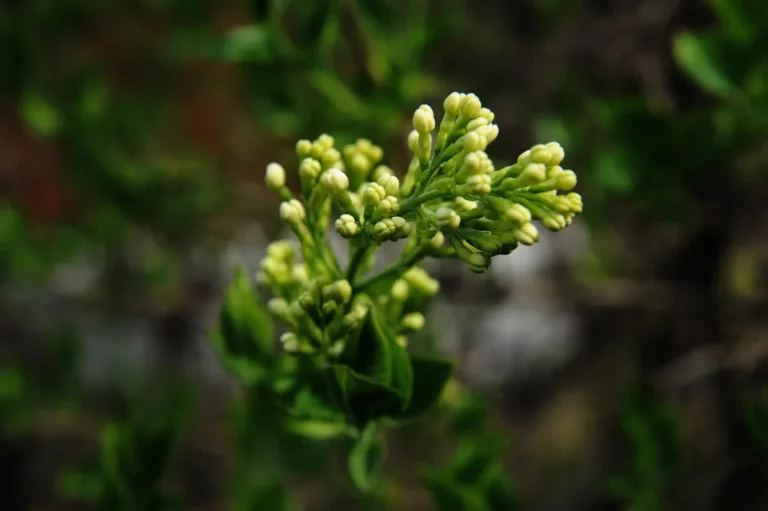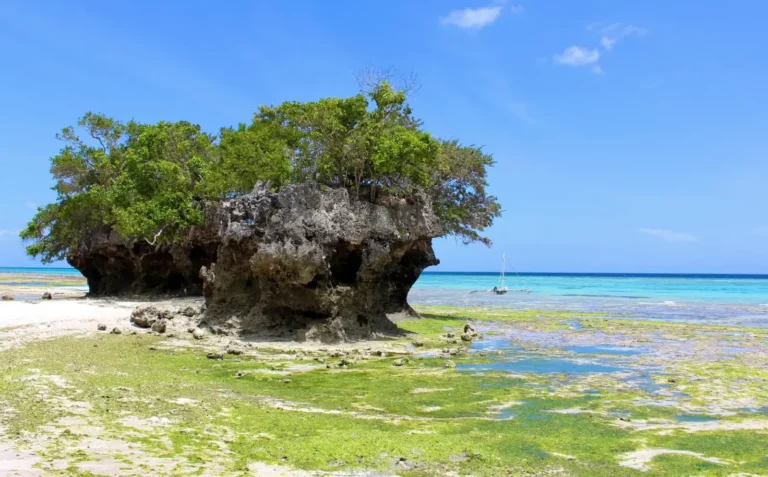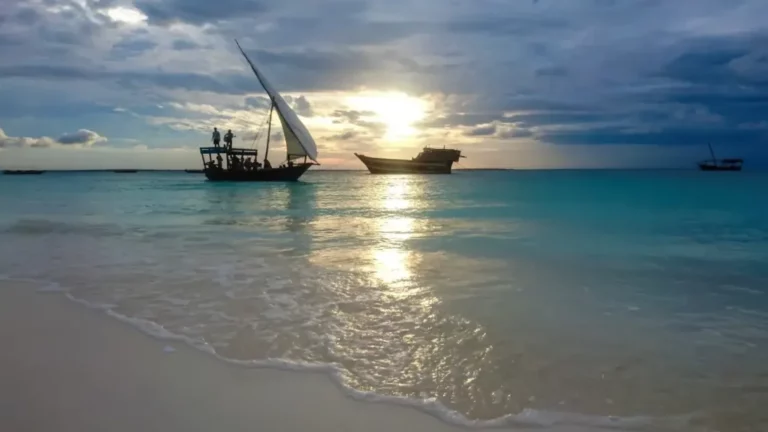Mangrove Kayaking Tours – Exploring Zanzibar’s Coastal Ecosystems
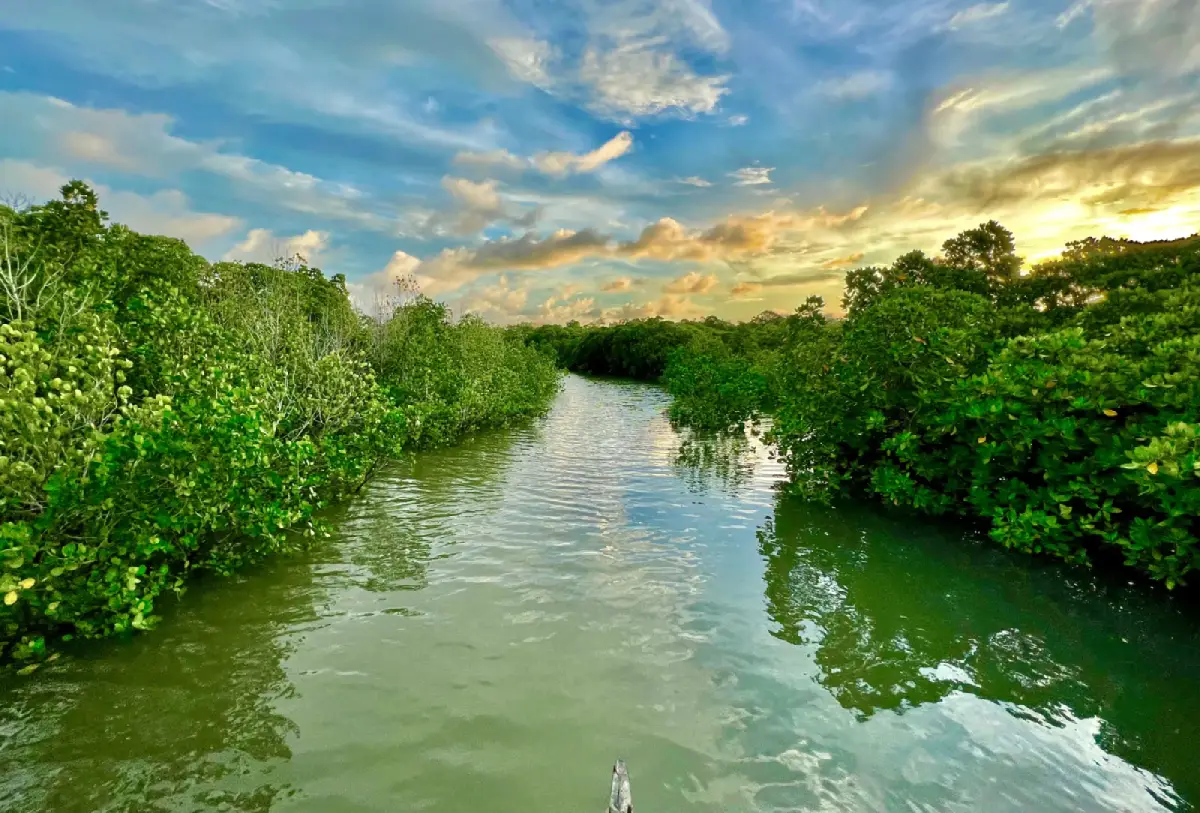
Welcome to the Wild Side of Zanzibar—By Kayak
Sure, Zanzibar’s beaches are legendary. But what if I told you that some of the island’s most magical moments happen not on the sand, but in a kayak, silently gliding through a labyrinth of tangled mangrove roots, where herons stalk and the water whispers like a secret? This is the Zanzibar you never knew you needed.
Kayaking in Zanzibar is not just a water sport—it is a portal to a world of natural wonder and ecological intrigue. Whether you are an eco-warrior, a thrill-seeking adventurer, a family with curious kids, or just someone who thinks “mangrove” sounds exotic and Instagrammable (you are not wrong), this adventure is for you.
So grab your paddle. We are heading into the salt-tangled forests that breathe life into Zanzibar’s coast.
Why Mangroves Matter (and Why You Should Kayak Through Them)
Nature’s Architects of the Coast

Mangroves are like the unsung heroes of the sea. These coastal forests—where trees grow in salt water like rebels with a cause—are vital ecosystems. In Zanzibar, they line much of the western and southern coastlines, creating a green halo that is as beautiful as it is essential.
They protect the shore from erosion, serve as nurseries for baby fish, and are even better at capturing carbon than the mighty rainforests. Every time you kayak through a mangrove channel, you are literally paddling through a climate warrior.
Wildlife in the Water and the Canopy

Do not let the still water fool you—these mangroves are teeming with life. As you drift in your kayak, keep an eye out for mudskippers (fish that walk on land, because Zanzibar does not do boring), fiddler crabs waving their oversized claws, and the occasional glimpse of a sea turtle cruising by.
Above you, kingfishers flash electric blue, and herons glide from branch to branch like they own the place. Which, to be fair, they kind of do.
It’s an Adventure, But Make It Eco
Unlike motorized tours that disturb the wildlife and leave a carbon trail, a kayak glides quietly and leaves nothing but ripples. It is the most sustainable way to explore these fragile ecosystems—and the most intimate.
You will hear the birds before you see them. You will notice the change in water salinity as you move from the lagoon to the open sea. And you will feel very, very small in the best way possible.
What to Expect on a Zanzibar Mangrove Kayaking Tour
The Launch Point: Where the Road Ends and the Adventure Begins
Most mangrove kayak tours in Zanzibar begin in places where tarmac gives way to sand tracks and local fishermen wave as you pass. Popular launch points include:
- Chukwani, just south of Stone Town
- Uzi Island, accessible by a causeway at low tide
- Pete Inlet near Jozani Forest
- Kiwengwa on the northeast coast
Your guide—usually a local with encyclopedic knowledge of tides, birds, and Swahili legends—will give you a quick safety brief, help you into your kayak, and then you are off, paddling into a world that feels hidden from time.
Kayaking Through a Living Forest
The kayak glides over clear, shallow water, where you can often see fish darting through mangrove roots. You will paddle down narrow channels shaded by arching branches, sometimes ducking under low-hanging limbs or maneuvering around tight bends.
It is a full-body experience, but not an exhausting one. Most tours are designed for beginners, with calm waters and slow pacing. If you can paddle a canoe or stir a soup pot, you can kayak through mangroves.
The Vibe: Serenity with a Side of Surprise
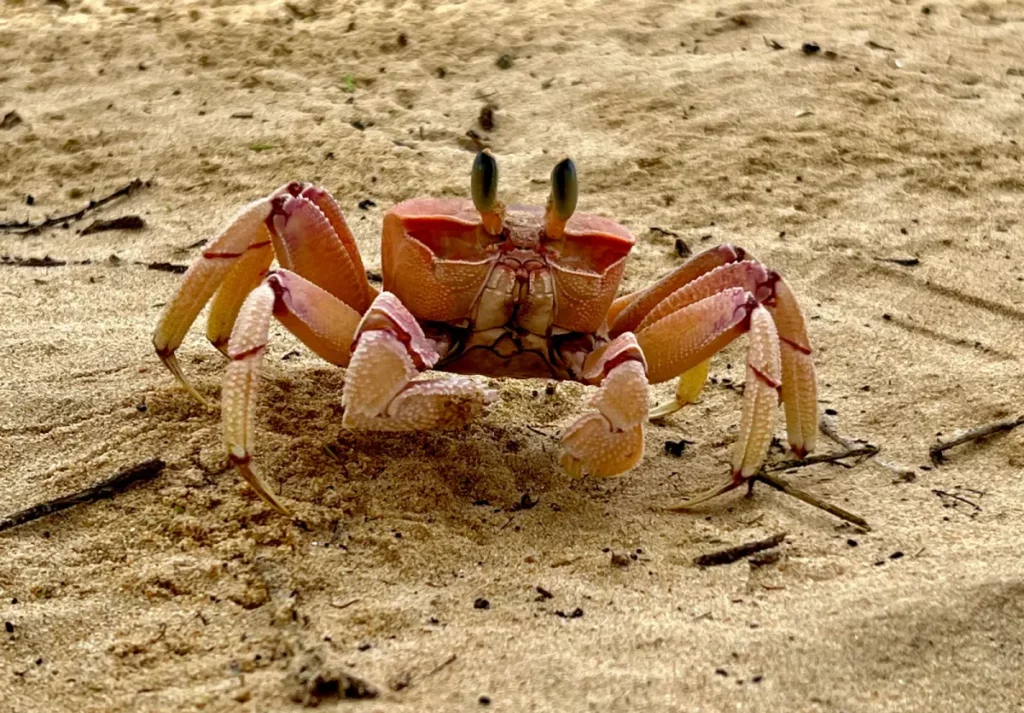
This is not a heart-pounding whitewater ride. It is calm, meditative, and immersive—but not without excitement. That splash near your boat? Probably just a crab falling off a root. Or a fish jumping. Or possibly a monkey on a fishing expedition. Welcome to nature’s improv theatre.
Local Culture Along the Way
Many mangrove kayaking tours include a visit to a nearby fishing village or a walk through a coastal community. This is where the adventure goes beyond nature and into the realm of culture.
You will learn how locals use mangrove wood (responsibly), how tides affect daily life, and maybe even hear a tale or two about spirits that live in the roots. Zanzibar’s oral traditions are as rich as its biodiversity.
Zanzibar’s Top Mangrove Kayak Destinations
Uzi Island: Kayak into the Heart of the Archipelago
Uzi is one of the most magical places to kayak in Zanzibar. It is connected to Unguja (the main island) by a causeway that vanishes at high tide, turning it into a semi-island again. The mangrove channels here are especially intricate, and the wildlife viewing is top-tier.
You will likely kayak through narrow tunnels of green, spot monkeys on the treetops, and see oyster-encrusted roots that look like coral growing on wood. If you are lucky, you might meet a dolphin pod out near the open water. Yes, this happens.
Pete Inlet and Jozani Forest: Paddle with the Red Colobus

This is your chance to kayak through mangroves and walk among Zanzibar’s famous red colobus monkeys all in one trip. The mangrove creeks near Pete Inlet are wide and serene, ideal for first-timers or those who want to bring kids along.
Pro tip: Combine your kayak tour with a Jozani Forest walk for the ultimate eco-adventure.
Chukwani Tidal Forest: Easy Access, Big Rewards
Close to Stone Town and perfect for half-day trips, the Chukwani mangroves are ideal for travelers short on time but long on curiosity. You can kayak here in the morning and still be back in town for lunch at Forodhani Gardens.
Despite the proximity to urban areas, this mangrove forest feels wild and untamed. It is also a great spot for birdwatching, with resident egrets and migratory waders.
When to Kayak in Zanzibar: Timing is Everything
Paddle with the Tides
Mangrove kayaking is one of those rare adventures where the ocean plays timekeeper. The tides dictate when you can enter certain channels and how deep (or shallow) your route will be. Low tide exposes muddy root systems and makes some areas too shallow to navigate. High tide, on the other hand, lets you glide right over submerged roots into hidden alcoves.
Most kayak tours are scheduled around mid-tide—when the water is high enough for easy paddling, but low enough to see the full spectacle of marine and plant life. Local guides are masters of the tide tables, and will time your departure to match the perfect conditions.
Best Time of Day for Kayaking
If you are chasing golden light and still water, sunrise and late afternoon are your best bets. Early morning kayaking means cool air, fewer bugs, and more active birdlife. Late afternoons bring that warm Zanzibar glow, with the mangroves bathed in amber reflections—dream fuel for photographers and romantics alike.
Avoid the heat of midday unless you want to turn your kayak into a sauna. Zanzibar’s equatorial sun does not mess around.
Best Season for Mangrove Kayaking
Zanzibar’s dry season (from June to October and then again from December to February) offers the most consistent weather. Clear skies, calm seas, and minimal rain make it the prime window for kayaking.
That said, even the rainy season has its charms—think moody skies, fewer crowds, and intense shades of green in the mangrove forests. Just bring a dry bag and a sense of humor.
Packing List: What to Bring on a Kayak Tour
The Essentials
- Waterproof bag – For your phone, camera, and snacks.
- Sunscreen – Reef-safe, always. You are an eco-hero now.
- Quick-dry clothes – You will get splashed, even if you are a pro.
- Hat and sunglasses – With a strap unless you want to donate them to the mangrove gods.
- Reusable water bottle – Hydrate like a champion.
- Water shoes or sandals – Sharp roots and squishy mud are part of the charm.
- Bug repellent – Especially during dusk tours.
Optional But Awesome
- Binoculars – For spotting birds, monkeys, and possibly pirates (just kidding… mostly).
- GoPro or waterproof camera – Because Instagram needs to see this.
- Snacks – Especially if your tour includes village visits or goes over two hours.
Safety Tips for Kayaking in Zanzibar
It Is Safe—But Be Smart
Kayaking in Zanzibar is generally very safe, especially with local guides who know the water like the back of their hand. But as with any outdoor adventure, a few basic rules apply:
- Wear your life jacket – Yes, even if you are Michael Phelps.
- Stay with your group – No solo missions unless you are certified and know the area.
- Listen to your guide – They know when a channel looks calm but is hiding a surprise current.
- Watch for sharp roots – Mangrove forests are beautiful, but they will bite if you crash into them.
- Stay hydrated and shaded – The sun can zap your energy quicker than you expect.
Health and Fitness Considerations
You do not need to be an athlete to kayak in Zanzibar, but a basic level of fitness helps. Tours are usually 1.5 to 3 hours long, with breaks and floating sessions. If you have back or shoulder issues, check with the tour operator about shorter or gentler routes.
Most tours are beginner-friendly, and kids from around 8 years and up can usually join in a tandem kayak with a parent. Bonus: It is a sneaky way to turn a family vacation into a science lesson.
Eco-Guidelines: Paddle Softly and Leave No Trace
Be a Mangrove Guardian, Not a Mangrove Menace
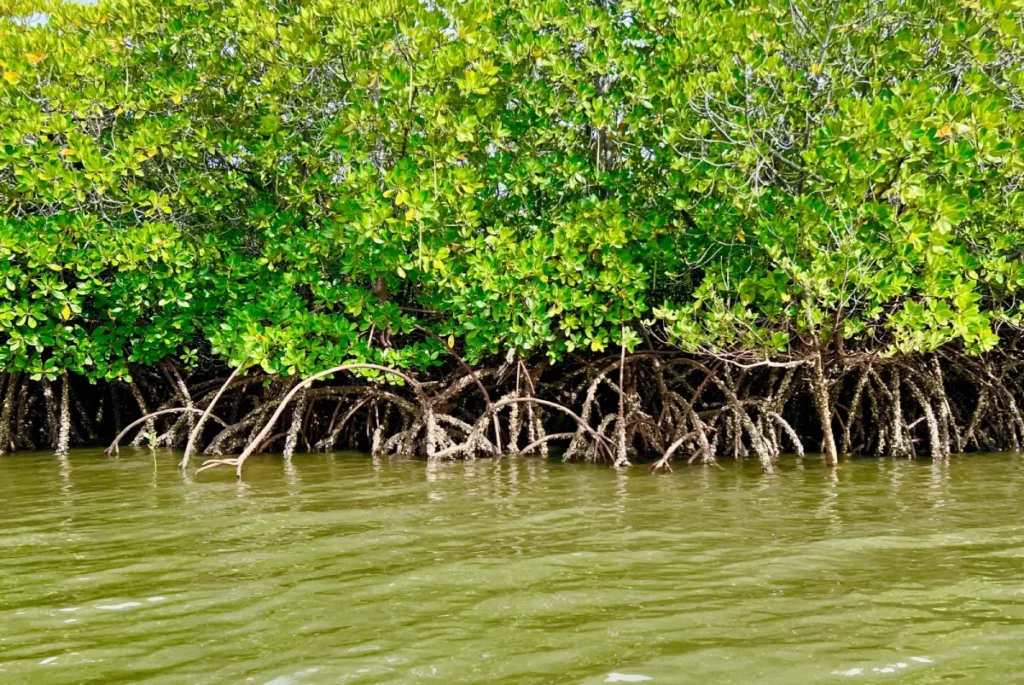
This is not just an adventure—it is an ecosystem. To keep Zanzibar’s mangroves healthy and beautiful, follow these basic kayaking guidelines:
- Do not touch the roots – They are alive and sensitive to disturbance.
- Avoid loud noises – Let nature be the soundtrack.
- Carry your trash out – Even biodegradable stuff can mess with the balance.
- Support local eco-tour operators – The ones who protect the mangroves often come from the very communities that depend on them.
Respect the Culture as Much as the Ecosystem
Many mangrove areas border fishing villages where Swahili customs still shape daily life. Dress modestly, ask before taking photos of people, and support local guides and businesses. That beachside coconut vendor? That is your post-kayak hydration hero.
More Kayak Adventures Across Zanzibar
Kiwengwa Mangrove Lagoon: Northern Charm
Up on the northeast coast, Kiwengwa is mostly known for its beach resorts—but head just a few hundred metres inland, and you will find a network of mangrove lagoons begging to be explored by kayak.
The waters are glassy, the mangroves are thick, and you might even hear the call of a Zanzibar bushbaby in the early morning light. Some operators offer sunrise yoga on floating platforms before the paddle. Wellness meets wild.
Menai Bay Conservation Area: Blue Safari Meets Mangrove Maze
This area, near Fumba and extending down toward Uzi Island, is part of a protected marine area known for its coral reefs, dolphins, and yes—mangrove forests.
You can combine a kayak tour with a snorkelling stop, a dhow cruise, or a seafood barbecue on a tidal sandbank. It is the ultimate Zanzibar adventure combo.
Choosing a Kayak Tour in Zanzibar: Who to Paddle With
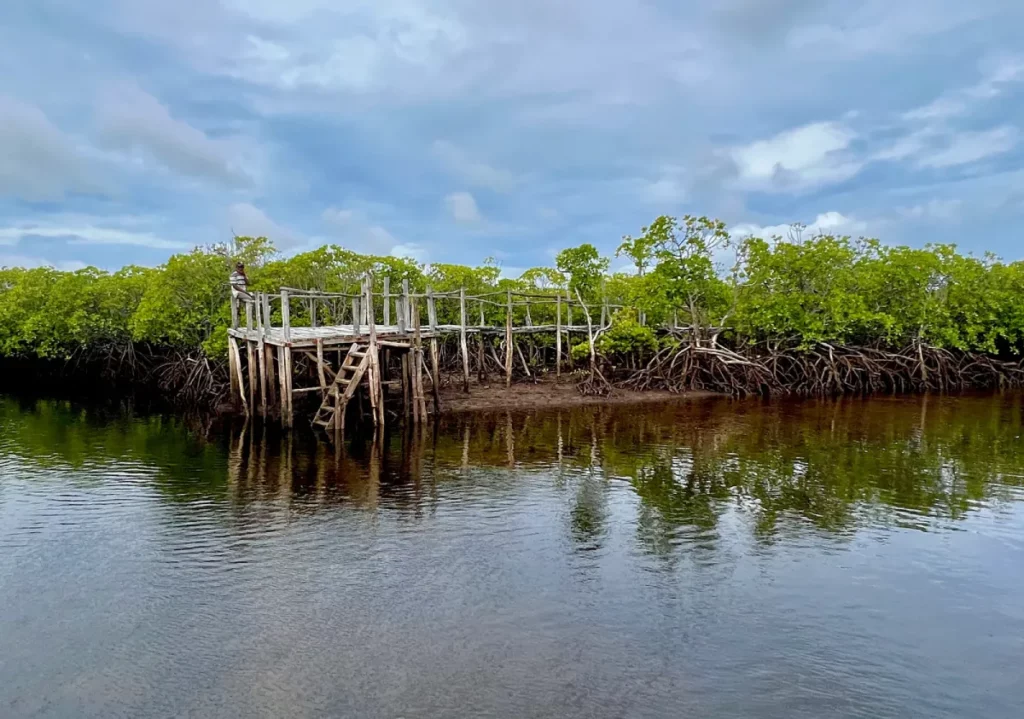
Not all kayak tours are created equal. Some focus on wildlife spotting, others add cultural village visits, and a few even toss in a yoga session or a seafood lunch cooked over open flames. Here’s a rundown of some well-loved, eco-conscious operators who know their way around the mangroves:
Eco Kayak Zanzibar – Local Passion Meets Conservation
Operating out of the Chukwani area, Eco Kayak Zanzibar is all about sustainability and community. Their guides are locals trained in ecology and water safety, and the company supports mangrove restoration projects with every tour booked.
Expect a laid-back, informative paddle with lots of birdlife, stories about traditional uses of mangroves, and a post-paddle coconut or hibiscus juice to wrap it all up.
Uzi Mangrove Tours – Off the Beaten Path Adventure
If you want to feel like you are exploring uncharted territory, go with a kayak tour on Uzi Island. Most tours here start with a scenic drive across the causeway (timed with the tide), followed by a paddle into some of Zanzibar’s most secluded mangrove forests.
This is raw, wild Zanzibar. The waters are pristine, and your only background noise will be the squawk of a hornbill or the splash of a silver fish leaping beside your boat.
Blue Safari Combo Tours – More Than Just a Kayak
In Menai Bay, you will find full-day tours that start with kayaking, segue into snorkelling, and finish with a beach barbecue. These are perfect for travelers who want variety, or for families with diverse interests. Many of these operators use traditional dhows for part of the journey, adding a Swahili maritime flair to your day.
Look for operators who follow conservation guidelines, avoid chasing dolphins, and limit group sizes for a more intimate experience.
Hidden Highlights and Local Surprises
Tidal Surprises
Here is a local secret: some mangrove tunnels only open at certain tide levels. Your guide might suddenly gesture and say, “Now!” and lead you into a narrow channel you would have missed otherwise. Moments later, you are in a sun-dappled world with no sound but dripping water and flapping wings.
The Floating Markets (Yes, Really)
In some coastal communities near Fumba and Uzi, women gather shellfish or mangrove fruits like matomoko (custard apple) and sell them directly from canoes. If you are lucky, you might paddle up beside someone offering a snack straight from the water. Bring small change and a waterproof smile.
A Visit from the Red Colobus
Near Jozani, you might hear rustling in the trees and see a red colobus monkey watching you from the canopy. These endemic primates are shy but curious—and when they decide to check out a kayak group, it makes for an unforgettable moment.
FAQs: Everything You Forgot to Ask Before You Booked
Is kayaking in Zanzibar suitable for beginners?
Absolutely. Most mangrove kayak tours are beginner-friendly. The waters are calm, the pace is gentle, and guides are super attentive. You do not need previous experience—just a sense of adventure and a willingness to paddle.
What is the minimum age for kids?
It varies by operator, but many allow kids from around 6 to 8 years old if accompanied by an adult. Tandem kayaks are common, so families can paddle together.
How long do kayak tours usually last?
Tours range from 1.5 hours to half-day experiences (around 4 hours with stops). Full-day combo tours that include snorkeling, dhow sailing, or village visits can last up to 6–8 hours.
Will I get wet?
Yes—but only a little. Kayak seats are usually dry, but paddling splashes are part of the fun. Wear quick-dry clothes and bring a towel if you plan to swim.
Can I bring my camera?
Yes, but bring a waterproof case or dry bag. Many magical photo ops await—especially when the light hits the mangrove canopy just right or a heron launches into flight beside you.
Final Thoughts: Paddle Into the Wild Side of Zanzibar
It is easy to think of Zanzibar as just a beach destination, but its real magic is in the margins—in the estuaries, mangrove tunnels, and tide-chased lagoons that tourists too often overlook. Kayaking is your ticket to these hidden worlds.
You will come away with salty toes, muddy elbows, and a head full of memories—like the time you silently drifted under a canopy of green as kingfishers flashed by and fish leapt from the water just to say hello.
And the best part? Your adventure leaves nothing behind but ripples.
So next time someone says, “What is there to do in Zanzibar besides lie on a beach?”—you know what to say:
“Grab a paddle. We are going kayaking.”
Ready to Kayak in Zanzibar?
Whether you are an eco-tourist, a photographer, a family looking for an outdoor learning day, or a thrill-seeker who prefers mangroves over margaritas, Zanzibar’s coastal ecosystems have a kayak waiting for you.
Book your tour with a local, eco-minded operator. Pack your dry bag. Bring your curiosity. And go explore the hidden blue-green arteries of one of Africa’s most enchanting islands—one paddle stroke at a time.

